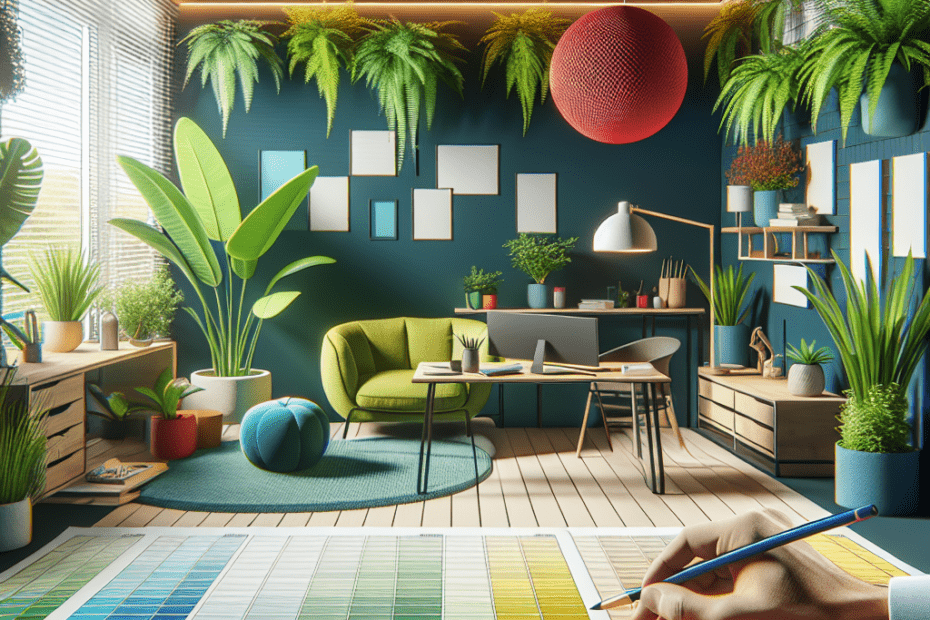In today’s world, many people have shifted to working from home, which makes having a functional home office more important than ever. Did you know that the colors you choose for your home office can impact your productivity and mood? Let’s explore the concept of Color Theory for Home Office to create a workspace that is not only functional but also inspiring.
Understanding Basic Color Theory
Color theory is the study of how colors mix, match, and contrast with each other. It involves understanding the color wheel, primary, secondary, complementary colors, and warm and cool tones. By grasping these basics, you can make informed choices about the colors that best suit your home office space.
The Impact of Color on Productivity
According to a study by the University of Texas, colors can significantly affect our emotions and behavior. For example, blue tones are known to promote feelings of calmness and serenity, making them a great choice for reducing stress. Alternatively, yellow is often associated with creativity and energy, which can be beneficial in a brainstorming session. Understanding these effects helps in creating a functional home office that enhances productivity.
Choosing the Right Colors for Your Home Office
| Color | Effect | Best Use |
|---|---|---|
| Blue | Calm, Focus | Work, Detailed Tasks |
| Yellow | Optimism, Creativity | Design, Creative Work |
| Green | Balance, Growth | General Workspace |
| Red | Energy, Excitement | Short Tasks, Motivation Boost |
| White | Clarity, Cleanliness | Minimalist Spaces |
Incorporating Color into Your Home Office
There are multiple ways to incorporate color into your home office without overwhelming the space. Consider painting a feature wall in a color that complements your work style. Use colored furniture or office supplies to add pops of color. Even artwork or plants can introduce beneficial hues into the workspace.
Color Psychology: Real-Life Examples
For those needing intense focus, consider a predominantly blue office space. Those seeking inspiration might prefer splashes of yellow or orange. Research from the International Journal of Environmental Research and Public Health suggests that workers exposed to a variety of colors in their environment report higher satisfaction levels.
Combining Color Theory with Personal Taste
While color theory provides a guideline, it’s important for individuals to incorporate personal taste into their design. If you have a favorite color that makes you feel productive, find ways to integrate it into your workspace. Personal touches not only enhance productivity but also make your office feel more welcoming and enjoyable.
Key Takeaways
- Understanding color theory can greatly enhance home office design.
- Colors have psychological impacts: blue for calm, yellow for creativity, etc.
- Integration of colors can be managed through walls, furniture, or accessories.
- Combining color theory with personal preferences creates a personalized and effective work environment.
FAQ
- 1. How does color theory affect my home office?
- Color theory affects your home office by influencing productivity and mood. Certain colors can help boost creativity and focus.
- 2. What is the best color for a home office?
- The best color depends on the work you do. Blues are great for focus, while yellows might be more inspiring for creative work.
- 3. Can I mix colors in the office?
- Yes, mixing colors can provide a balanced workspace, as long as the combinations are harmonious and serve your needs.
- 4. Why should I pay attention to wall color?
- Wall colors cover large areas and can set the tone for the entire workspace, affecting your mood and productivity throughout the day.
- 5. Are those effects universal for everyone?
- Not entirely. While color psychology offers general insights, personal experiences with color can vary widely.
